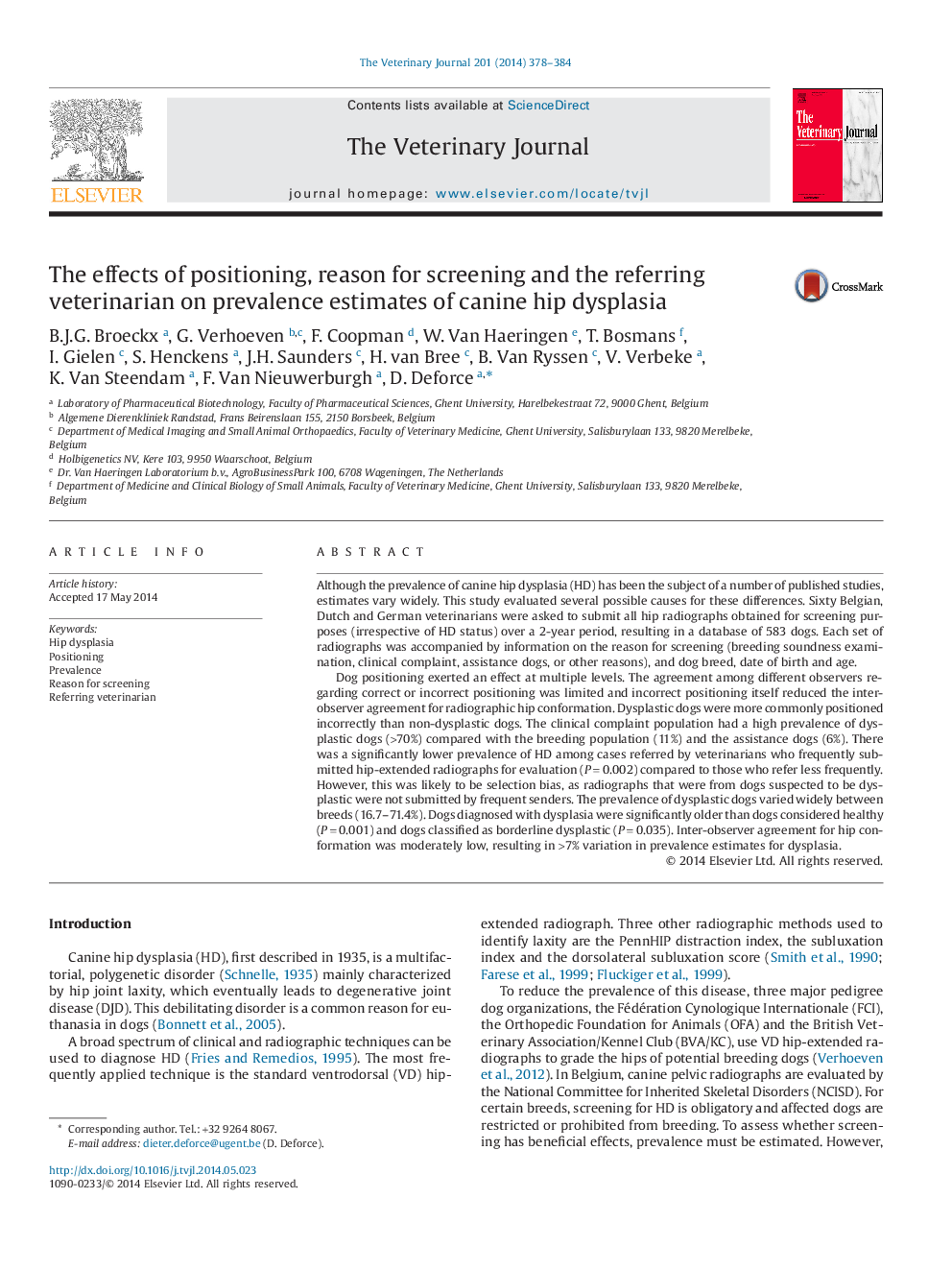| کد مقاله | کد نشریه | سال انتشار | مقاله انگلیسی | نسخه تمام متن |
|---|---|---|---|---|
| 5797986 | 1111766 | 2014 | 7 صفحه PDF | دانلود رایگان |
Although the prevalence of canine hip dysplasia (HD) has been the subject of a number of published studies, estimates vary widely. This study evaluated several possible causes for these differences. Sixty Belgian, Dutch and German veterinarians were asked to submit all hip radiographs obtained for screening purposes (irrespective of HD status) over a 2-year period, resulting in a database of 583 dogs. Each set of radiographs was accompanied by information on the reason for screening (breeding soundness examination, clinical complaint, assistance dogs, or other reasons), and dog breed, date of birth and age.Dog positioning exerted an effect at multiple levels. The agreement among different observers regarding correct or incorrect positioning was limited and incorrect positioning itself reduced the inter-observer agreement for radiographic hip conformation. Dysplastic dogs were more commonly positioned incorrectly than non-dysplastic dogs. The clinical complaint population had a high prevalence of dysplastic dogs (>70%) compared with the breeding population (11%) and the assistance dogs (6%). There was a significantly lower prevalence of HD among cases referred by veterinarians who frequently submitted hip-extended radiographs for evaluation (Pâ=â0.002) compared to those who refer less frequently. However, this was likely to be selection bias, as radiographs that were from dogs suspected to be dysplastic were not submitted by frequent senders. The prevalence of dysplastic dogs varied widely between breeds (16.7-71.4%). Dogs diagnosed with dysplasia were significantly older than dogs considered healthy (Pâ=â0.001) and dogs classified as borderline dysplastic (Pâ=â0.035). Inter-observer agreement for hip conformation was moderately low, resulting in >7% variation in prevalence estimates for dysplasia.
Journal: The Veterinary Journal - Volume 201, Issue 3, September 2014, Pages 378-384
